Footage from the Tornado aircraft’s first ever flight on the 14th of August 1974.
The aircraft is still currently in service and has been an effective multirole combat aircraft utilised by British, German, Italian and Saudi Air Forces over the years.
The Tornado was developed and built by Panavia Aircraft GmbH, a tri-national consortium consisting of BAE (previously British Aircraft Corporation), MBB of West Germany, and Aeritalia of Italy.
It was introduced into service in 1979–1980.
Due to its multirole design, it was able to replace several different fleets of aircraft in the adopting air forces. The Royal Saudi Air Force became the only export operator of the Tornado in addition to the three original partner nations. A tri-nation training and evaluation unit operating from RAF Cottesmore, the Tri-National Tornado Training Establishment, maintained a level of international co-operation beyond the production stage.
The Tornado was used by the Royal Air Force (RAF), Italian Air Force and RSAF during the 1991 Gulf War, in which the Tornado conducted many low-altitude penetrating strike missions.
The Tornados of various operators were also used in conflicts in the former Yugoslavia during the Bosnian War and Kosovo War, the Iraq War, Libya during the Libyan civil war, as well as smaller roles in Afghanistan, Yemen, and Syria.
Including all variants, 992 aircraft were built.



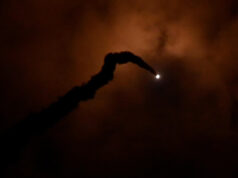

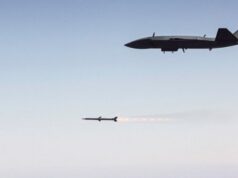
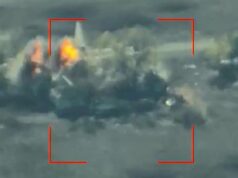
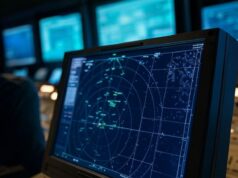
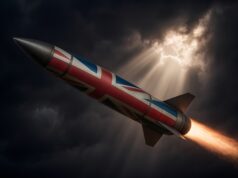




I remember that first flight, a long and painful journey for the British aircraft industry. TSR2 begat AFVG (the French stitched us up on that one, again) begat UKVG begat Tornado.
In the end a formidable strike aircraft that would have inflicted considerable damage on the Warsaw pact forces if it had gotten hot on the plains of central Europe. Performance in the first gulf war was marred by poor tactics by the RAF.
Development of the ADV variant was a mistake, the RAF would have bettered served by the procurement of F15 for the air defence role. I do recall the USAF was interested in an EW version of the tornado shame a deal could not have been done.
Disappointing exports as the world markets wanted swing role aircraft rather than a dedicated strike aircraft.
All in all not one of greats, but a worthwhile outcome for the RAF and UK industry.
Its served the RAF extremely well over a 35 year period. Agreed regarding the F3, it was a flawed concept, cobbled together to save money, but ended up costing a fortune with endless modifications required.
One potential unbuilt Variant that could have been a very capable aircraft, was based on the F3, but with multi role capability, using US avionics and engines and offered to Japan from memory.
I think had the foresight and money been available back in the early 1990’s the RAF could have had a similar muti role beast, using the F3 airframe, integrating the Sea Harriers Blue Vixen Radar and 20,000 lb uprated RB199’s.
All quite doable with existing equipment … Missed opportunity.
To argue a more positive case for the Tornado F3: it wasn’t the flexible fighter-bomber needed by today’s RAF, and characterised by the Typhoon; instead, the F3 was a development to meet the air-force’s specific Cold War needs – a bomber-destroyer, with a powerful radar, able to loiter at great distances over the North Sea and North Atlantic; it was also fast and slippery at low-level, and had a capable load of missiles. It was a niche interceptor, developed to meet the needs of a sole operator – and unsurprisingly had limited appeal on the export market.
The F3 was a great advance over previous short-ranged British fighters (Lightning & Hunter) that had bedevilled RAF air-defence operations. And we’d better not mention the lumbering Javelin! It was also a big improvement on its predecessor – the Phantom.
The F15A had the performance the RAF was looking for, but not the second crewman to deal with the high-workload expected in the cockpit; other contenders like the F14 was too expensive, and the F16 and Mirage 2000 were both outclassed by the F3 in the long-range interceptor role.
In the context of the 1970s and 1980s, the aircraft was exactly what the UK needed for its
challenging air-defence needs. But of course, such a niche interceptor was too inflexible for
post-Cold War operations – and particularly hampered by poor performance at high-altitude.
I don’t believe its concept was flawed, but like many British aircraft, the F3 suffered from a protracted and costly development, and a lack of later investment to maximise its full potential. An intriguing “what-might-have been” was the F3 re-engined with the Typhoon’s EJ200 engines!
I think the F3 was fundamentally flawed because it was based on an aircraft design that itself was far too narrowly specified and suffered from design by committee.
Germany insisted on the a weight limit that in turn constricted the aircrafts dimensions, thus range.
We arrived at a very capable low level Strike aircraft with engines and wings optimised for that environment. It was in effect narrowly focused on operations in Europe.
So a low level optimised Strike aircraft was a bad starting point for a high altitude interceptor.
It was a politically derived aircraft and a compromise, though the RAF used it to the best of its ability … I always thought it was a beautiful aircraft though.
Had the AFVGA ever got off the drawing board, we would have had a truly capable all round aircraft by the mid 1970’s.